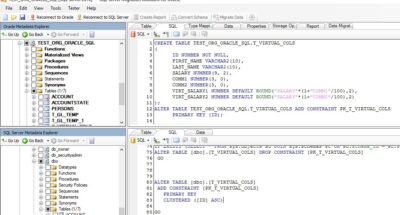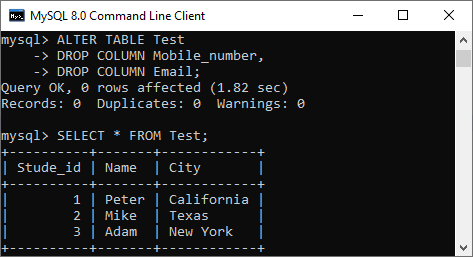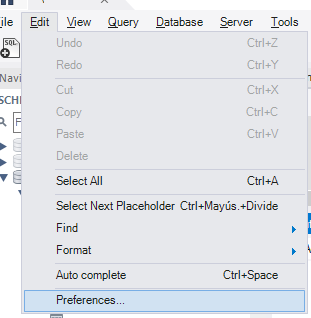

- MYSQL DELETE COLUMN WORKBENCH HOW TO
- MYSQL DELETE COLUMN WORKBENCH UPDATE
- MYSQL DELETE COLUMN WORKBENCH CODE
If you run a DELETE statement with only this clause, it will remove all of the data from the target table-a consideration that should not be taken lightly. Deleting data from a MySQL tableĪs noted above, the DELETE clause is the only mandatory clause in a DELETE statement.
MYSQL DELETE COLUMN WORKBENCH HOW TO
Above all, make sure you’re not working in a production environment when learning how to use the DELETE statement. The larger concern is that you can lose a lot of data if you’re not careful when using this statement, so always exercise caution, and be sure that all data is fully protected. That said, the clauses are, for the most part, self-explanatory, and for most uses, you should have little trouble figuring out how they work. As with the ORDER BY clause, the LIMIT clause is optional and cannot be used for multi-table deletes.Īs you work through the examples in this article, you’ll get a better sense of how the various statement elements work together. When used with the ORDER BY clause, the deleted rows will be determined by the sort order specified by that clause. The LIMIT clause limits the number of rows that will be deleted.

The clause is optional and cannot be used for multi-table deletes.
MYSQL DELETE COLUMN WORKBENCH UPDATE
The ORDER BY clause is similar to the one you saw in the SELECT and UPDATE statements. This clause is used primarily in conjunction with the LIMIT clause to help better direct which rows should be removed.


The DELETE clause also supports the use of the IGNORE modifier for returning a warning message, rather than an error, if an issue arises. You can specify multiple tables, which involves defining join conditions, but my focus in this article is on single-table deletes. The clause identifies that table from which the data will be deleted. The DELETE clause, which includes the FROM subclause, is the only mandatory clause in the DELETE statement.In the meantime, here’s a breakdown of the statement’s clauses, as I’ve shown in the syntax: You can refer to MySQL topic DELETE Statement for the complete syntax. Now, this is exactly as Workbench would do it, only that when I type it myself it will not execute (above error message) but when I allow Workbench to execute the query it works fine.The syntax shown here does not include all supported statement components, but it provides the basic elements you need to know to get started with the DELETE statement.
MYSQL DELETE COLUMN WORKBENCH CODE
So I change my code to look exactly like Workbench would do itself: ALTER TABLE Database.mytable I figure I would use the built-in right-click, drop column in the edit table so I use that and realise it uses a "drop index" as well. Error on rename of './Database/#sql-461_somerandomnumbers' to './Database/mytable' (errno: 150)" I get another error message that says "Error Code: 1025. So my query looked like the following: ALTER TABLE Database.mytable No problem, just delete the foreign key as well. Today, I tried to delete two tables from a database and upon trying I get the error message that a "foreign key constraint fail" has occurred. This is more of a meta-question than I need actual help with but I could not find information about it elsewhere.


 0 kommentar(er)
0 kommentar(er)
